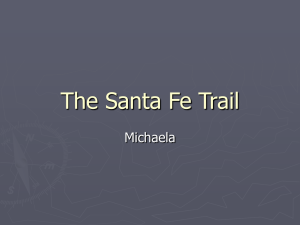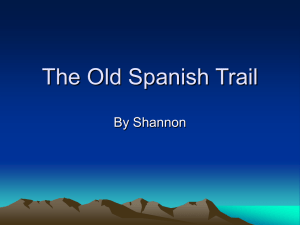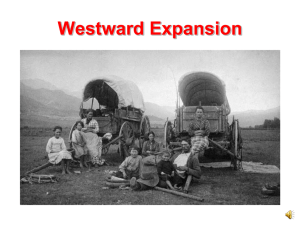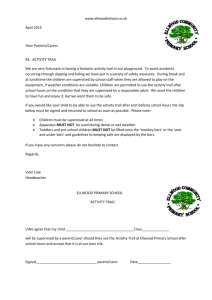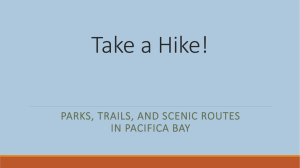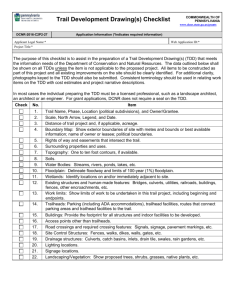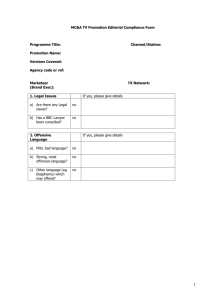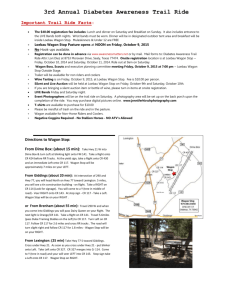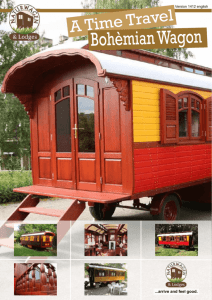Overland Route Information
advertisement
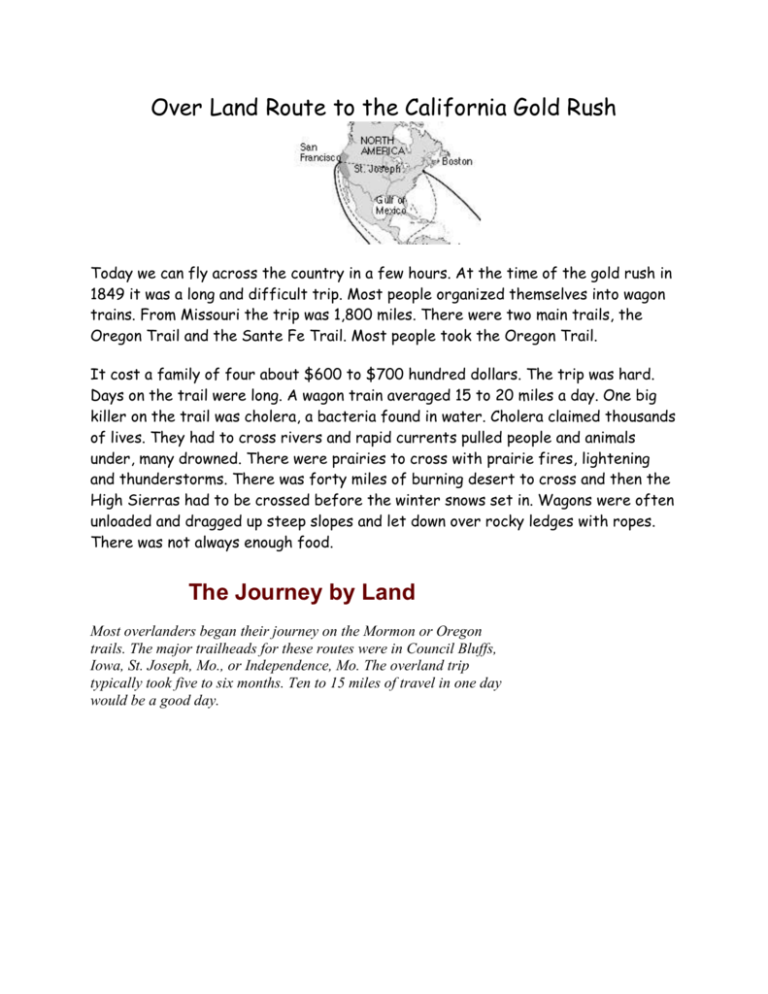
Over Land Route to the California Gold Rush Today we can fly across the country in a few hours. At the time of the gold rush in 1849 it was a long and difficult trip. Most people organized themselves into wagon trains. From Missouri the trip was 1,800 miles. There were two main trails, the Oregon Trail and the Sante Fe Trail. Most people took the Oregon Trail. It cost a family of four about $600 to $700 hundred dollars. The trip was hard. Days on the trail were long. A wagon train averaged 15 to 20 miles a day. One big killer on the trail was cholera, a bacteria found in water. Cholera claimed thousands of lives. They had to cross rivers and rapid currents pulled people and animals under, many drowned. There were prairies to cross with prairie fires, lightening and thunderstorms. There was forty miles of burning desert to cross and then the High Sierras had to be crossed before the winter snows set in. Wagons were often unloaded and dragged up steep slopes and let down over rocky ledges with ropes. There was not always enough food. The Journey by Land Most overlanders began their journey on the Mormon or Oregon trails. The major trailheads for these routes were in Council Bluffs, Iowa, St. Joseph, Mo., or Independence, Mo. The overland trip typically took five to six months. Ten to 15 miles of travel in one day would be a good day. The routes taken People often traveled by steamboat up the Ohio River or the Mississippi to reach the major trailheads. The Oregon Trail was created earlier by fur trappers. A The Humboldt Basin The dreaded 40-mile stretch of Humboldt Basin promised severe heat, sand deep enough to trap oxen and no food or water. B The Continental Divide South Pass was the easiest passage through the Rockies. Rivers to the east flowed toward the Atlantic. Rivers to the west flowed toward the Pacific. From this point on, travel became increasingly difficult. C Independence Rock Marked on by hundreds of pioneers who passed it. D Fort Laramie Over 39,000 people were recorded passing through Fort Laramie in the first six months of 1849. It is likely that several thousand more passed through unrecorded. E The Platte River The rains of 1849 made the overland journey difficult at the Platte River. F Chimney Rock A 500 ft. column. It marks 550 miles from Independence, Mo. G The Jayhawkers A group, named the Jayhawkers, broke off from a larger group in the hopes of cutting 600 miles off the distance. Their journey ended in an area named Tomesha, "ground afire," by the local Indians. Today, the area is called Death Valley. Forts Pioneers could replenish food, tools and other supplies at posts along the way, if the wagon train before them hadn't cleaned the forts out. Landmarks The weary travelers looked forward to sighting these almost mythical places as they confirmed that they were not only on the right trail but also making progress. Sickness A cholera epidemic killed young and old alike on the trail. Dysentery was introduced from drinking dirty water. Trails Trails through Arizona and New Mexico with frequent towns and trading posts were popular. What they took The cost for a family of four was around $600 to $700. Groups organized and agreed to travel together. Any given train of wagons would have people with different occupations. The more varied the abilities, the more comfortable the journey was likely to be. Supplies might include: Cooking stove made of sheet metal, cows, bacon, ham, rice, dried fruit, molasses, packed butter, bread, coffee and tea, tools for mining, farming and repairing wagons, vegetable and flower seeds, medicines, quilts, musical instruments, guns, ammunition, awls, needles strengthened for mending clothes and tents, bedding, including buffalo robes, waterproof india rubber blankets to keep things dry, lock chains to hold wagons back on steep hills. On the trail: There are hooks on the inside of the hoops to hang milk cans, guns, etc. Making butter: After a few hours on the bumpy trail, a ball of butter would form in the center of a can of milk. Plates, silverware, pots and pans were kept in a special box attached to the rear of the wagon. Animals were driven by shouting and whip-cracking over their heads. They were not struck. Some brought chickens. Eggs could be stored in flour barrels. So long as they were not touching, they wouldn't break. The rigors of life on the trail led many women to try wearing pants for the first time. People often walked, as the wagons traveled very slowly and the bumpy trails made the wagon seats uncomfortable. On the prairie, wood was scarce. Pioneers discovered that buffalo chips created a hot, smokeless and odorless fire. A bucket of grease hung between the wheels to lubricate them. Sources: "The Great American Gold Rush" by Rhoda Blumberg, "The Gold Rush" by Liza Ketchum, "The California Gold Rush," published by American Heritage, "The California Gold Rush" by Elizabeth Van Steenwyk, "Hunting for Gold" by William Downie, "Sea Routes to the Gold Fields" by Oscar Lewis, "If You Traveled West in a Covered Wagon" by Ellen Levine, "The East Indiamen" by Russell Miller, Steve and Eric Chrissman of the National Nautical Heritage Society Graphics: Sean McDade Read more here: http://www.calgoldrush.com/graphics/byland.html#storylink=cpy
